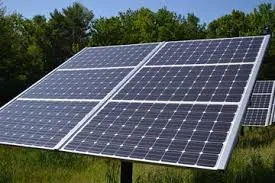tie inverter grid
Understanding Tie Inverter Grids A Comprehensive Overview
In recent years, the demand for renewable energy solutions has surged dramatically. Among the many innovations in this space, tie inverters, also known as grid-tied inverters, have emerged as a crucial technology for integrating solar energy systems into the electrical grid. This article will explore the importance, functionality, and benefits of tie inverter grids, shedding light on how they contribute to a sustainable future.
What is a Tie Inverter?
A tie inverter is a device that converts direct current (DC) generated by photovoltaic (PV) solar panels into alternating current (AC) that can be fed directly into the electrical grid. Unlike standalone inverters used in off-grid systems, tie inverters are designed specifically for grid-connected applications. This means they work in conjunction with the grid to supply electricity to homes, businesses, and sometimes even back to the utility providers.
How Do Tie Inverters Work?
When sunlight hits solar panels, they generate DC electricity. The tie inverter takes this DC electricity and converts it into AC electricity, which is compatible with home appliances and the grid. The inverter constantly monitors the grid's voltage and frequency to ensure that the electricity produced is synchronized with the grid's supply. If the grid goes down, tie inverters automatically shut off to protect utility workers and equipment.
Benefits of Tie Inverter Grids
tie inverter grid

1. Cost-Effectiveness One of the primary advantages of tie inverter systems is their cost efficiency. These systems usually require less expensive components compared to off-grid systems, as they do not necessitate batteries for energy storage. This means lower initial investment and reduced maintenance costs.
2. Net Metering Many regions offer net metering policies, which allow homeowners and businesses to receive credit for the surplus energy they export back to the grid. This incentivizes solar energy adoption, making tie inverter systems even more financially appealing.
3. Environmental Impact By facilitating the use of solar energy, tie inverters play a crucial role in reducing greenhouse gas emissions. The ability to harness clean, renewable energy contributes to a decrease in reliance on fossil fuels and helps combat climate change.
4. Grid Stability Tie inverters support grid stability by contributing to a balanced energy supply. When solar generation is high, excess energy can be fed back into the grid, helping to meet demand during peak consumption times. Conversely, during low generation periods, the grid can supply energy seamlessly.
5. Enhanced Energy Independence While grid-tied systems do rely on the grid, the incorporation of tie inverters allows users to partially free themselves from traditional energy sources. The greater the adoption of renewable technologies, the more localized energy production can become, fostering energy resilience.
Conclusion
As the world increasingly turns toward renewable energy sources, tie inverter grids stand out as a pivotal technology that supports solar energy integration into our existing electrical systems. The ability to harness solar power in a cost-effective, environmentally friendly manner, while enhancing grid stability and promoting energy independence, positions tie inverters as crucial players in the transition toward a more sustainable energy future. With continued advancements and increased adoption, the role of tie inverters will undoubtedly expand, elevating their significance in our global energy landscape.
-
Understanding the Advantages of Solar String Inverters for Your Energy SystemNewsApr.29,2025
-
Choosing the Right PV Inverter: A Comprehensive GuideNewsApr.29,2025
-
The Future of Solar Power: Exploring Bifacial Solar PanelsNewsApr.29,2025
-
The Complete Guide to Solar Panels: Efficiency, Cost, And InstallationNewsApr.29,2025
-
The Best Options for Efficiency and Cost-EffectivenessNewsApr.29,2025
-
Harnessing the Power of Off-Grid Solar Inverters for Energy IndependenceNewsApr.29,2025







